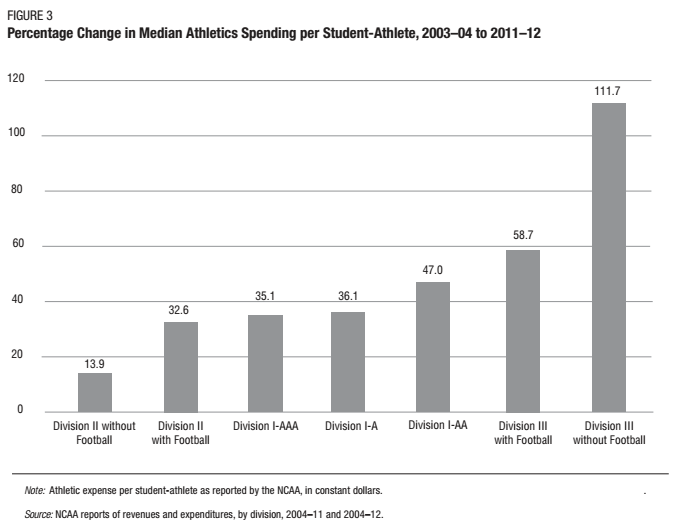Guess How Much Money Your College is Making From Sports...

By:
Ever wonder how universities you’ve never heard of can afford expensive football and basketball programs?
Pretty simple. They charge their students for it.
A report from The Center for College Affordability and Productivity says members of the Mid-American Conference (MAC), for example, typically have athletic budget shortfalls of $20 million dollars each year. They close the gap with either general funds (e.g. tuition or state funding) or through activity fees charged to students.
MAC schools have to do this because they don't earn the same television revenue as, for example, the Big Ten Conference, which is the MAC’s big brother in the Midwest. In its new TV deal with ESPN, the MAC's members will get $8 million each season. Split evenly amongst the 13 universities in the conference, that’s $670,000 for each school -- a miniscule amount compared to the Big Ten, where each school makes $26.5 million from television. (That number is projected to rise to $44.5 million.)

That's crazy -- these schools spend tuition dollars on sports?
Here's what's crazier: because of the way our higher education system works, spending general funds on basketball and football is a smart decision. Successful football and basketball programs are the quickest way schools can improve their pool of high school applicants. Attracting better applicants is the holy grail for university administrators, and studies have shown that sports success helps. Wins on the field lead to more applications, a lower acceptance rate, and a freshman class with higher average SAT scores. Those are three massively important metrics by which organizations like U.S. News and World Report rate colleges. University personnel are hired and fired based on those numbers. Knowing this, is it really surprising that they prioritize sports when putting together the budget?
There’s even a name for this phenomenon: The Flutie Effect, coined after former Boston College quarterback Doug Flutie, whose success on the field with B.C. is often credited with boosting the university’s prestige. Schools with programs as small as Appalachian State's or as large as Auburn's report the same benefit.
Of course, the problem with relying on sports is that it’s a gamble. Establishing a successful football or basketball program is no simple task. And it’s even harder for a MAC school, which is competing for a smaller piece of the pie with less television revenue to back them up. The result is that universities are investing millions of dollars into the athletic performance of a group of 18 to 22-year-old kids, hoping to strike it big. However, not every team can win every year. So, that means for every success story -- like Louisville or Utah who climbed from mid-major conferences to big-time conferences -- there are dozens of school budgets in the red as a result of athletics. Yes, the rewards can make it worthwhile, but athletic spending, as demonstrated by the Knight Commission, is not an overall efficient use of education dollars.
This plays into the larger incentives problem in American higher education.
Universities and their administrators have every reason to ratchet up the arms race of expensive amenities as they compete for high school students’ attention. Whether it’s a new water slide or a successful football program, it costs money. Spending that’s not going to education. Spending that’s increasing costs across the board. Spending that’s making college less accessible for average Americans.
